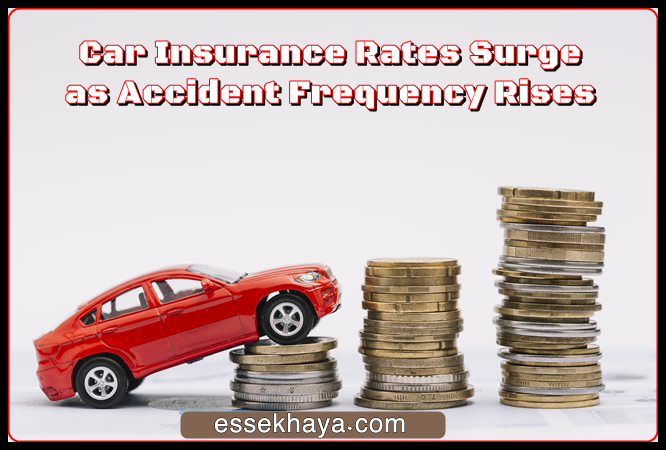 |
| Car Insurance Rates Surge as Accident Frequency Rises - learn more |
Accidents are Increasing at an Alarming Rate.
Numerous factors, such as the following, may be responsible for the rise in accidents, including:
- Distracted Driving: With cellphones and other electronic gadgets becoming more widely available, the incidence of incidents involving distracted drivers has increased alarmingly. Drivers often engage in activities like texting, talking on the phone, or using apps while operating a vehicle. This diverts their attention from the road and significantly raises the risk of crashes.
- Urbanization and Congestion: As cities grow in size and traffic on the roadways increases, the likelihood of getting in an accident rises. Longer travel times, inadequate infrastructure, and more population density all contribute to more accidents. This is particularly true in areas with dense populations.
- Substance Abuse: Operating a motor vehicle while intoxicated by alcohol, prescription medicines, or illicit substances is still a serious concern. Driving while intoxicated impairs judgment, coordination, and response times, which significantly raises the risk of being in an accident.
Car insurance laws: What happens if you do not have car insurance
The Impact on Insurance Owners
- Rising Premiums: As a result of the need to pay out more claims when there are more accidents, insurance companies must raise their rates to customers. In order to make up for these losses, insurers were compelled to raise policyholders' rates. People and families are financially burdened by this increase, which makes it harder for them to get necessary insurance. As a result, their medical requirements may not be satisfied.
- Less Accessibility: Due to rising insurance costs, some individuals may be compelled to forgo protection altogether, which may increase the number of motorists who do not carry insurance. Since incidents involving uninsured drivers may result in higher expenses for insured drivers, this has a domino effect. This is because, in the case that an accident includes an uninsured party, insured drivers are obligated to cover their own damages.
- Problems with Affordability Legal requirements for auto insurance are common, and the continually rising costs disproportionately hurt those with lesser incomes. Due to the likelihood of disparities in economic and transportation opportunities, this exacerbates already-existing socioeconomic injustices.
Best Personal Loans in the USA for April 2023
The Effects on the Financial Services Industry
- Statements of Income and Loss The profitability of insurance companies is hampered by the rising number of accidents. Higher claim settlements that are not matched by an equivalent rise in premium revenue lead to unfavorable loss ratios. These ratios may jeopardize the insurers' ability to make a profit.
- Risk assessment and underwriting: In order to offset the increasing losses they are incurring, insurers may tighten their underwriting standards. Certain people will find it more difficult to get reasonable insurance as a result, particularly high-risk drivers. As a result, prospective policyholders could have fewer alternatives, which might also result in less market competition.
- Technological Developments: To more precisely assess risk and promote safer driving habits, insurers are increasingly depending on cutting-edge technologies such as telematics and usage-based insurance. These advancements may reduce the number of accidents on the road, which would eventually lead to decreased insurance costs.
 |
| Car Insurance Rates Surge as Accident Frequency Rises |
Other Options for Action
1- Education and understanding: Increasing the general population's understanding of safe driving practices via public awareness campaigns, educational programs, and targeted efforts will help to lower the number of accidents that take place. Roadways may be made safer by increasing public awareness of the dangers of distracted driving, the importance of driving while intoxicated, and the benefits of defensive driving techniques.
2- Legislative Action: Governments have the authority to enact stricter punishments for traffic infractions including texting and driving, driving while intoxicated, and other similar offenses. The amount of accidents that happen as a consequence of the deterrence effect may be decreased by vigorously enforcing traffic regulations and applying severe penalties.
3- Technological Interventions: By continuing to develop and use driver assistance technologies like automated emergency braking, lane departure warnings, and adaptive cruise control, accidents may be prevented and the effect of human error can be reduced. These innovations may also lessen the severity of accidents when they do happen.
Conclusion
Due to the rise in vehicle insurance premiums brought on by the increasing accident frequency, both consumers and the insurance business are facing significant problems. However, it is still conceivable.
Comments
Post a Comment